Happy New Years! It is 2016 and many people are ready to start the new year with resolutions to either be healthy, share time with the loves ones, or go onto a new adventure. I am very excited to share that I made not one resolution, but six resolutions that are all focused in the outdoors in some way or the other. Here I share my resolutions with descriptions and fun images!
- Growing food!

Image taken at my former job in New Hampshire as we put the garden beds to ‘bed’ for the winter. I will be doing the same this year at my new job with Growing Places in Leominster, Massachusetts.
Growing up in the warm, tropical island of Puerto Rico, I had the privilege to learn how to grow vegetables, herbs, fruits, and other delicious food. Gardening has been part of a family tradition for many generations and I find gardening to be my zen! I get to plant a seed, tend for it and later on harvest the fruits of my labor. I hope to garden this year, spend time with family and friends at the garden, and enjoy delicious meals we create with the garden products! My favorite and family tradition dish we make is Sofrito, a delicious sauce that is pretty much the secret ingredient to a lot (if not all) Puerto Rican food dishes. My family and I also save seeds of cilantro and peppers as we LOVE those crops!
- Volunteer at a farm!

Image taken: September 2015 at my friends, Kohei Ishihara’s farm: Movement Ground Farm in Berkley, Massachusetts.
I love farms! My past experience with putting my hands in the dirt, weeding, and of course, meeting new people have been at farms. I have friends who are farmers and I love them for taking on, what I consider, the most important job in the world! Being nurtures, growers, and feeders of their communities, farmers are superheroes on my book. Therefore, I love supporting farms by visiting, volunteering as much as I can during the season, and purchasing their goods!
3. Keep on researching Latino/a/x Outdoor and Environmental work!

LO loves being part of America Latino Eco-Festival! L-R: Jose Gonzalez, LO Founder, me being silly, and Asnoldo, LO Colorado Ambassador. Image taken: October 2015
I love reading, writing, and learning more about my cultural roots and the environment. My resolution is part of my ongoing career as an Environmental Educator. I want to keep learning from Latino Leaders, community members, and other in the Environmental movement their steps, questions, answers, solutions, and much more in regards to Latinos and the Environment. I hope to attend conferences, connect with other human beings that are interested in the work of making the environment an inclusion to all. I want to also learn more and part-take in the conversation about the Afro-Latino(a/x) identity in the Environment in the United States. I can’t wait for what I will discover!
4. Keep on walking in the woods…
I want to keep on taking walks and hikes in many trails as possible. I enjoy being in the woods, using my learned skills of plant identification, take some time for me in the woods! There is something about being able to walk in the woods, maybe it is the sounds of the wind embracing the trees, the sound of my boots against the snow/ice as I make my way to the magical land called the woods. I am looking forward to many walks and hikes with loved ones, by myself, and new people!
5. Discovering more spiritual practices related to the outdoors!
As a spiritual being, I enjoy anything related to madre tierra. This year, I want to learn about more spiritual practices which include rituals, writings, and much much more that bring me to the outdoors. I am in the journey of discovering more the spiritual practices of my cultural roots. My family has a mixed ancestral spiritual practices coming from both Africa and the Tainos. I am in the self-discovery phase of these spiritual practices and I am hoping that year I will be able to tie in the new information with my current spiritual believes. I am very honored, thankful, and excited for this resolution!
6. More time with my familia outdoors!

My family and I got to see the Springfield Christmas Parade and enjoy arts, music, and quality time together! Image taken: December 2015
There is nothing more precious than spending time with your loved ones outdoors. It is fascinating, fun, full of laughs, jokes, and love. I am looking forward to spending time with my family and friends in outdoors activities. Many outdoors activities I have done with my family have been attending outdoors events such as parades, go to the park for a walk, attend the pool during the summer, and create funny looking snow mans during the winter! These are all full of memories for me and have been ideal to get us outdoors, enjoy one another, and experience nature!
These are my six new years resolutions which I am extremely proud to put into place for me. They all include the outdoors in many ways! I would love to read/hear your new years resolution and how they include the outdoors by sharing on the comments section!
Happy New Year!



















